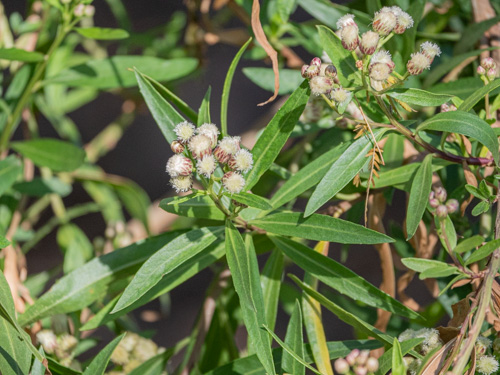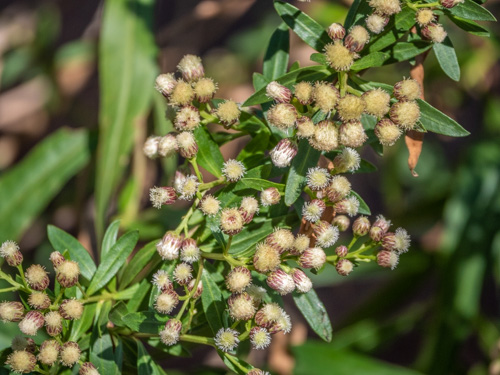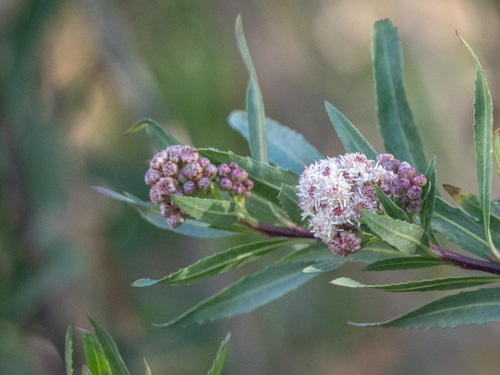Baccharis salicifolia
Mule Fat
This is a large straggly bush with many stems and sticky foliage which bears plentiful small, fuzzy, pink, or red-tinged white flowers which are highly attractive to butterflies. The long pointed leaves may be toothed and contain three lengthwise veins. It is a host plant for the larval stage of the fatal metalmark butterfly, and the adult stage also nectars on the flowers. Mulefat plays host to several gall-inducing insect species including Aceria baccharices. The name mule fat comes from the practice of prospectors tying their mules to the plant. The mules would eat the leaves, causing them to bloat and appear fat by the time the prospectors returned. There appears to be a complex of up to four species—emoryi, salicina, neglecta and angustifolia—that intergrade from west to east. Characteristics progress from broader leaves and larger heads (emoryi form of salicina) to narrow leaves with small heads (neglecta, angustifolia).



